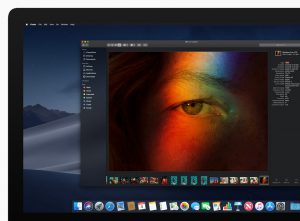Apple Announcement of Next Version of MacOS Missing Key Core Component
COMMENTARY: 06.08.18 – At Monday’s WWDC 2018, the annual Apple Worldwide Developers Conference, the Cupertino, Calif.-based technology company once again announced the next version of its operating system, MacOS 10.14 Mojave, bringing with it another refresh and improvements under the hood. But after almost two decades of the same version of MacOS being some version of System 10 since the turn of the century, it seems like an entirely new version is due with a key component at its core missing from the spotlight.
Short of Apple releasing MacOS 11, what could be sorely missing from the user experience? No, it’s not the long-awaited dark mode that some users have been asking for for quite some time now. What I’m referring to is the computing interface which has remained unchanged since the dawn of the very first MacOS released back in 1984.

This idea is not mine to begin with. The thought of Apple (or Windows who just tends to follow what Apple does) needing a new computing interface comes from a former writer over at Low End Mac, the other website I write for (and our own Charles W. Moore as well), who wrote in a 2001 opinion piece that, “What Apple needs now, more than ever, is to redefine the OS landscape. … When I say redefine the OS landscape, I mean that Apple has to come up with the next generation operating system, not an operating system you see and use today, but whatever will supersede what we see and use today.”
I discussed in my own article published this morning which is a rebuttal to the original author’s piece that the next interface to logically come from Apple is a touch enabled one. With iOS having pioneered the user interface that has become all too commonplace since Apple reinvented the phone with the announcement of the iPhone in 2007 and subsequently the iPad in 2010, a merger of Mac OS and iOS would make the most sense. Especially due to the fact that actual computers such as Mac desktops and laptops are slowly being turned down in favor of mobile devices such as smartphones and tablets.
Yes, there are those in the Mac community who loathe the idea of a merger of MacOS and iOS and operating a computer with a touch enabled interface. The late Apple CEO and founder Steve Jobs himself said when announcing the iPad in 2010, “We’ve done tons of user testing on this and it turns out it doesn’t work.”
“Touch surfaces don’t want to be vertical. It gives great demo but after a short period of time you start to fatigue and after an extended period of time your arm wants to fall off. It doesn’t work, it’s ergonomically terrible!”
Also current Apple CEO Tim Cook has publicly said that MacOS will never merge with iOS and at Monday’s WWDC event, Apple Senior Vice President of Software Engineering Craig Federighi corroborated that fact again when talking about MacOS Mojave.
But with Apple rumored to be producing its own processors come the next decade in 2020 with chips that were designed to best perform with a mobile operating system such as iOS? My bets are that a merger, whether fully or in hybrid form, is in Apple’s future despite denials from the top and we may finally see the new face — interface — of personal computing.
You can read the full version of my article on Low End Mac here.
Want to join the conversation? Comment below:
